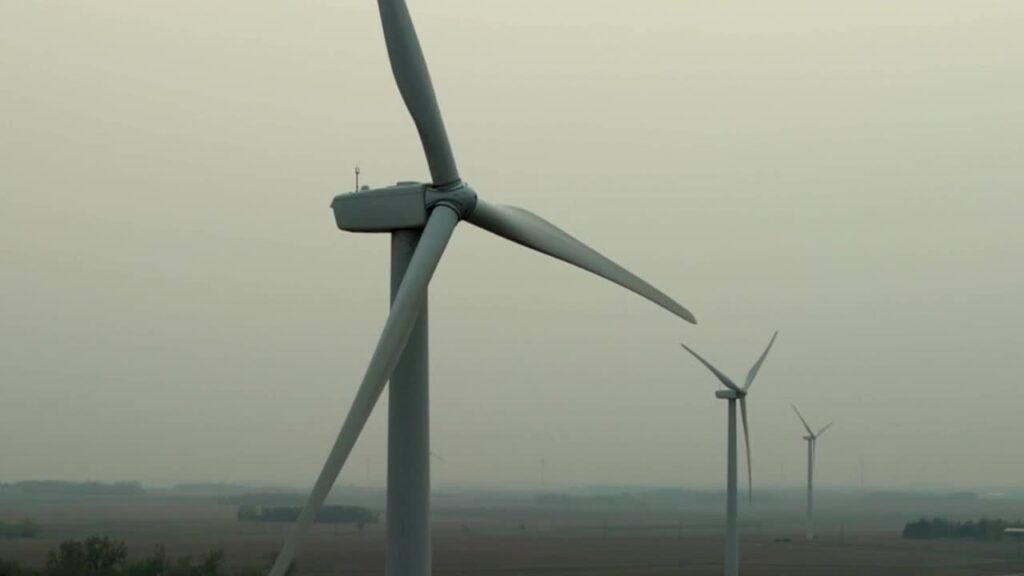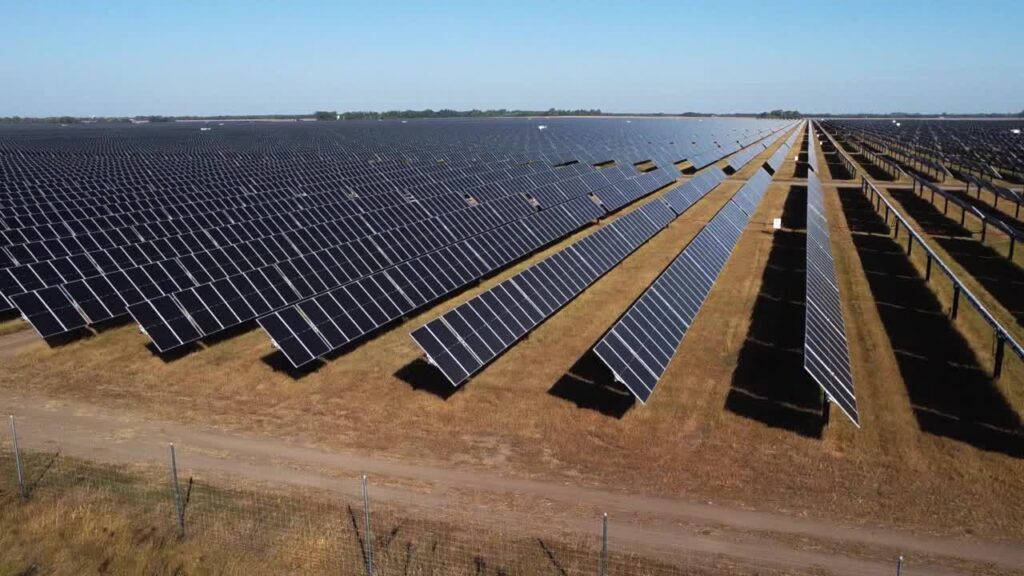As deadline looms, Minnesota is Charging Ahead to build utility-size battery plants
Brand new solar panels stretch for miles around Minnesota’s most powerful coal power plant known as Sherco.
The site is a stark contrast between old and new technology.
“This really is the epicenter of our energy transition in Minnesota,” said Ryan Long, President of Xcel Energy for Minnesota and the Dakotas.
The Sherco coal plant in Becker has only a few years left. All three units are slated to go offline in 2030 as Xcel ramps up its renewable energy to takeover.
But right now there is one key piece missing: batteries the size of football fields.
Xcel plans to build two, each using different technology, right next to its retiring coal plant.
More than three and a half hours away, another slice of land is about to be transformed by private developer, Invenergy, into a solar farm hooked to its own battery plant.
“It’s a big deal,” said Monica Monterrosa, Director on the Renewable Development team at Invenergy.
Invenergy says the Lake Wilson Solar Energy Project is the first utility-size battery plant approved by the Minnesota Public Utilities Commission.
“We have a great community that is engaged and excited about the project,” she said.
These projects are part of the rush in Minnesota to meet the carbon-free deadline 16 years away. In an effort to reduce greenhouse gas emissions, a new state law requires utilities to commit to delivering 100% clean energy by 2040.

State of Transition
According to the Minnesota Department of Commerce, state utilities have already made significant strides.
In 2023, renewable energy like solar and wind, accounted for nearly one third of all electricity generated in the state. Natural gas made up 24% followed by coal with its slow and steady decline down to 22%.
RELATED: State regulators warned Minnesota Power about leaks months before coal ash spill in July
Utility-size battery plants enable utilities to store power from wind and solar and deploy it on days when there is no wind or sun.
“Energy storage is, in my mind, the key step in making that happen,” said Logan O’Grady, the executive director of MNSEIA, an industry group pushing clean energy.
Earlier this year, Siemens issued a nearly 100-page report that outlined the dire need, calling energy storage “essential for Minnesota’s transition to carbon-free electricity.”
The report found the state needs up to 2,800 megawatts of battery storage.
“The key outcome of that study is this is not possible without energy storage. Energy storage technology, just like solar technology is very nascent in Minnesota, it’s very new,” O’Grady said.
It’s so new, some critics argue that it’s not yet proven.
“While it’s fun, it seems like a neat idea, the technology doesn’t exist,” said Rep. Chris Swedzinski, a Republican from southwest Minnesota.
Swedzinski has been outspoken about Minnesota’s aggressive 2040 clean energy plan since the start.
“We’re being told that the battery capacity is what’s going to make the difference. I mean, that is a pipe dream that is really putting our economy at risk,” he said. “People are not going to invest in a state that does not have safe, does not have affordable and does not have reliable energy sources.”
Evolving Tech
Renewable energy experts argue the technology does indeed exist and some, like lithium battery plants, have been proven to work around the country.
But it’s also true that the technology continues to evolve.

Xcel’s new battery plant at Sherco will test out new technology known as iron-air, using iron and rust, and it comes with a really attractive upside: it can hold a charge for up to four days compared to the four hour charge of traditional lithium plants.
“We do think it’s going to work, but that’s also why we’re piloting it, to figure out how exactly is it going to operate on the grid once it is operational, and how are we going to be able to control it,” said Long, the Xcel Energy executive.
Aaron Hanson at the University of Minnesota sees another upside.
“Really exciting for Minnesota given that we mine for iron here,” he said.
Hanson’s office conveniently has rooftop access to the solar panels that power nearly 20-percent of his building on a sunny day. For years he’s been talking about how batteries can help unleash the cheapest form of electricity: wind and solar.
RELATED: How an ‘energy traffic jam’ is disrupting investment in Minnesota’s Wind Belt
“If batteries can enable more of that cheapest generation to be integrated into the grid, in theory, it should actually reduce the cost of electricity,” he said.
Xcel Energy said the Inflation Reduction Act provided nearly six billion dollars in tax credits to build out its renewable energy transformation. It plans to return that to customers in the form of bill credits.
The utility expects power bills to go up less than one percent.